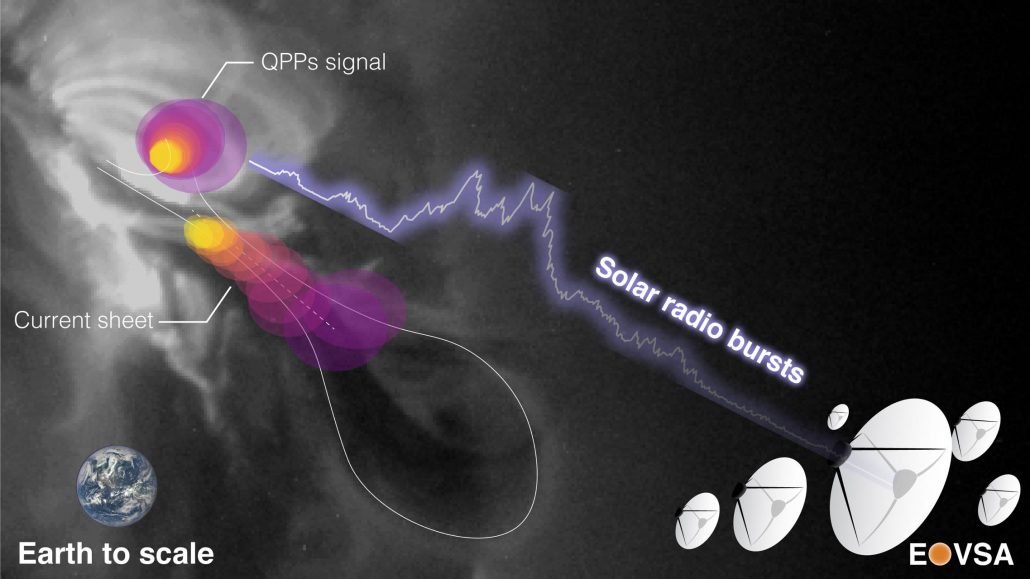
Quasi-periodic pulsations (QPPs; also known as quasi-periodic oscillations, i.e., QPOs) are electromagnetic emission phenomena that vary quasi-periodically with time. They appear in celestial transient events with different temporal/spatial scales, such as stellar flares, gamma ray bursts and fast radio bursts.
The sun, an ordinary star closest to us, is a place where flares with QPPs appear frequently. In the standard flare model, magnetic reconnection plays an important role in releasing energy from the coronal magnetic field, ejecting plasmoid and accelerating electrons. After escaping from the reconnection region, those energetic electrons propagating along magnetic field lines will induce microwave emissions by a gyrosynchrotron mechanism. Thus, the temporal variation of microwave emissions is closely related to the process of electron acceleration. Once the magnetic reconnection happens quasi-periodically, the electron acceleration will also be quasi-periodic and QPPs will be generated.
In the recent paper published in Nature Communications, Youankun Kou and colleagues describe the new imaging observation of microwave QPPs at the flare current sheet region for the first time, by using the microwave radioheliograph Expanded Owens Valley Solar Array (EOVSA) with the state-of-art spectral-imaging capability.
It has been found that the microwave sources at the current sheet are much weaker than those at flaring loops, and thus tend to be overwhelmed by background noise. Thanks to EOVSA’s high dynamic range and spectral-imaging capability, the authors found that temporal variations of brightness temperatures and spectral indices (smaller spectral indices, i.e., harder spectra, corresponding to higher non-thermal quality) of all those sources, no matter strong or weak, present similar quasi-periodicities. Moreover, a 2.5-dimensional MHD simulation further validates that magnetic islands generated in the current sheet modulate magnetic reconnection into a quasi-periodic form.
All these results strongly support the scenario that quasi-periodic magnetic reconnection in the current sheet accelerates electrons quasi-periodically and then generates QPPs. https://www.astro.gla.ac.uk/users/eduard/cesra/?p=3435








Recent Comments